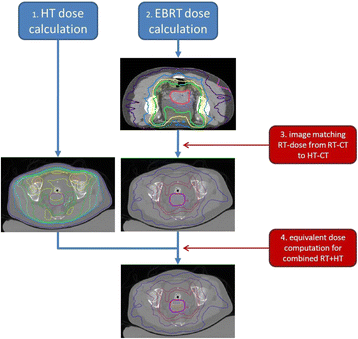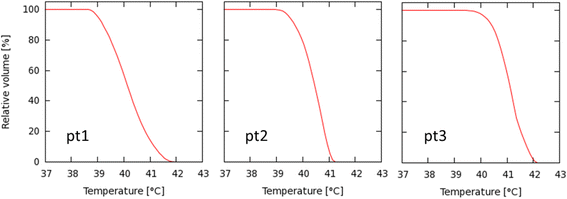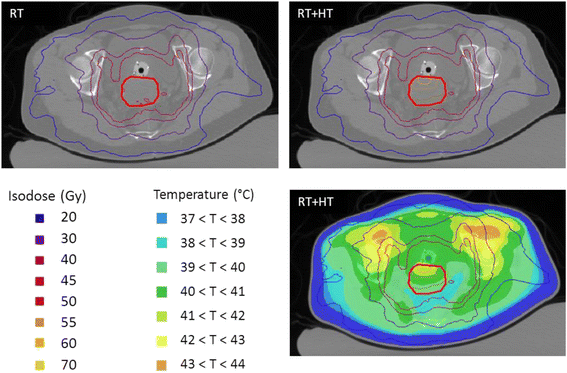Biological modelling of the radiation dose escalation effect of regional hyperthermia in cervical cancer
- PMID: 26831185
- PMCID: PMC4735973
- DOI: 10.1186/s13014-016-0592-z
Biological modelling of the radiation dose escalation effect of regional hyperthermia in cervical cancer
Abstract
Background: Locoregional hyperthermia combined with radiotherapy significantly improves locoregional control and overall survival for cervical tumors compared to radiotherapy alone. In this study biological modelling is applied to quantify the effect of radiosensitization for three cervical cancer patients to evaluate the improvement in equivalent dose for the combination treatment with radiotherapy and hyperthermia.
Methods: The Linear-Quadratic (LQ) model extended with temperature-dependent LQ-parameters α and β was used to model radiosensitization by hyperthermia and to calculate the conventional radiation dose that is equivalent in biological effect to the combined radiotherapy and hyperthermia treatment. External beam radiotherapy planning was performed based on a prescription dose of 46Gy in 23 fractions of 2Gy. Hyperthermia treatment using the AMC-4 system was simulated based on the actual optimized system settings used during treatment.
Results: The simulated hyperthermia treatments for the 3 patients yielded a T50 of 40.1 °C, 40.5 °C, 41.1 °C and a T90 of 39.2 °C, 39.7 °C, 40.4 °C, respectively. The combined radiotherapy and hyperthermia treatment resulted in a D95 of 52.5Gy, 55.5Gy, 56.9Gy in the GTV, a dose escalation of 7.3-11.9Gy compared to radiotherapy alone (D95 = 45.0-45.5Gy).
Conclusions: This study applied biological modelling to evaluate radiosensitization by hyperthermia as a radiation-dose escalation for cervical cancer patients. This model is very useful to compare the effectiveness of different treatment schedules for combined radiotherapy and hyperthermia treatments and to guide the design of clinical studies on dose escalation using hyperthermia in a multi-modality setting.
Figures





References
-
- Peters WA, III, Liu PY, Barrett RJ, II, Stock RJ, Monk BJ, Berek JS, et al. Concurrent chemotherapy and pelvic radiation therapy compared with pelvic radiation therapy alone as adjuvant therapy after radical surgery in high-risk early-stage cancer of the cervix. J Clin Oncol. 2000;18:1606–13. - PubMed
-
- Whitney CW, Sause W, Bundy BN, Malfetano JH, Hannigan EV, Fowler WC, Jr, et al. Randomized comparison of fluorouracil plus cisplatin versus hydroxyurea as an adjunct to radiation therapy in stage IIB-IVA carcinoma of the cervix with negative para-aortic lymph nodes: a Gynecologic Oncology Group and Southwest Oncology Group study. J Clin Oncol. 1999;17:1339–48. - PubMed
Publication types
MeSH terms
Substances
LinkOut - more resources
Full Text Sources
Other Literature Sources
Medical

